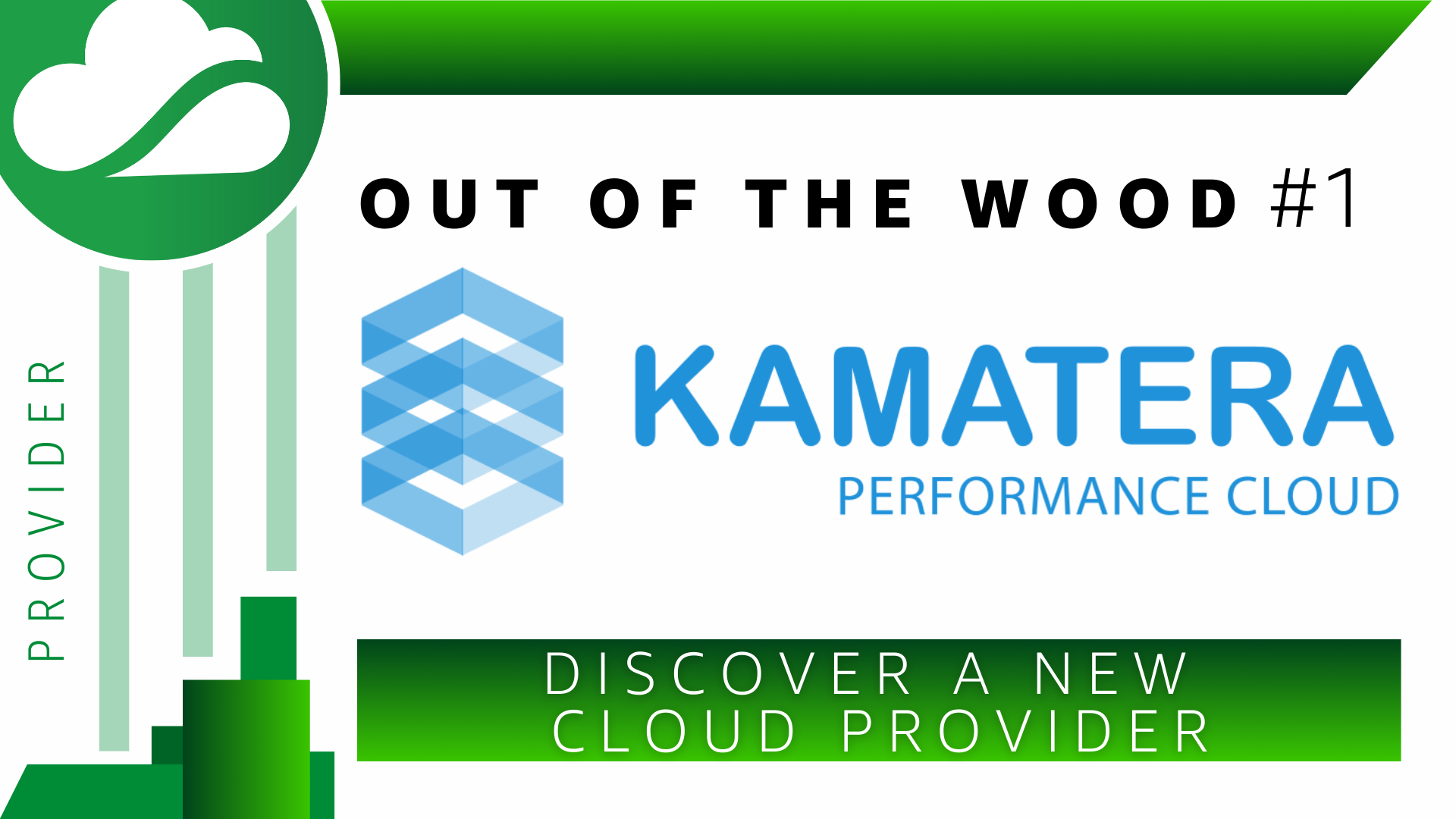
Out of the wood #1 : Kamatera
That's make almost 3 years our analysis platform runs on computers all around the globe and automagically collects stuff about cloud market such as locations, instance sizes and more important price and performance. We are actually close to 60 providers, counting IaaS, PaaS or CDNs as vendors and this is a huge stack of knowledge that we want to share. Of course, our P2P is already here for people who want a comparison tool about price and performance, but this application isn't able to translate all our knowledge. Then before to create another super visualization tool to expose our data, we thought that laying words on electronic paper would be a good and quick solution. So here's a first article of a series presenting small and medium size cloud providers that aren't on all lips but worth it. The first platform studied in this series called "Out of the wood" is Kamatera, a medium sized vendor with an international offering.
Who are they
 Firstly Kamatera should be qualified by their worldwide presence with datacenters in North America, Europe, Middle East and China. Not only with single locations on continents, but pretty well scattered, covering for instance in the Eastern, Western and Central USA. Following our methodology we class Kamatera as a medium size provider, they are mainly a cloud compute vendor providing IaaS. But on top of that, they give a major attention to the customer service, then you are free to use their infrastructure with high-level support or benefit from their managed services guaranteed by their teams. In terms of cloud services, they present all the required features for a decent compute provider:
Firstly Kamatera should be qualified by their worldwide presence with datacenters in North America, Europe, Middle East and China. Not only with single locations on continents, but pretty well scattered, covering for instance in the Eastern, Western and Central USA. Following our methodology we class Kamatera as a medium size provider, they are mainly a cloud compute vendor providing IaaS. But on top of that, they give a major attention to the customer service, then you are free to use their infrastructure with high-level support or benefit from their managed services guaranteed by their teams. In terms of cloud services, they present all the required features for a decent compute provider:
- Virtual machines scaling up to 72 CPU and 384GB of RAM
- VPC management
- Block storage powered by SSD
- Load balancer
- Firewall
- Multi-user management
- API
More than IaaS, they also propose a great-sized catalog of SaaS services based on their VMs. Called services and apps, they allow users to opt-in for a preconfigured MongoDB, Rancher or Wordpress without extra costs.
How is their platform
Let's dive into their cloud servers design. Kamatera chose a flexible shaping of virtual machines, meaning that you can set a number of CPU and amount of RAM for each server you launch. 8CPU-8GB or 15CPU-200GB, everything is possible permitting an accurate composition of your infrastructure. Above that, 4 kinds of VM exist:
- General Purpose (B) : Dedicated CPU thread
- Dedicated (D) : Dedicated CPU Core (2 threads)
- Burstable (T) : Dedicated CPU thread with extra costs after 10% of utilization
- Availability (A) : Non-dedicated CPU thread with no resources guaranteed
Again, by providing these types of vCPU, Kamatera allows consumers to adjust pricing and performance with their workload. No need to make a choice in a memory-optimized series for your Redis cluster, just design servers fitting your requirements.
Performance insights
We've launch our machinery on their infrastructure, collecting hardware specifications and metrics such as Geekbench scores or CPU steal. From our analysis, we are in a VMware ecosystem with Intel processors. Here's a sample of chips we discovered across their datacenters:
- Intel Xeon CPU E5-2620 v2
- Intel Xeon CPU E5-2660 v3
- Intel Xeon CPU E5-2697A v4
- Intel Xeon CPU Gold 6150
- Intel Xeon CPU Platinum 8270
From tests ran by our automated platform Kamatera obtains good a performance set, you’ll find below graphs representing their 2CPU-4GB VMs and different families at Microsoft Azure. We picked all the different type of vCPU available at Kamatera:
Compared to this well-known big player, Kamatera really performs well. This is just a sample and our extensive testing reveal that CPU performance increases almost linearly with the number of vCPU. Moreover, the charts above represent pretty well the 4 kind of vCPU: Dedicated performs the best, then General Purpose, Burstable then Avaibility. Beyond their honorable performance, another great characteristic of Kamatera is their aggressive pricing. Despite they don't have long term billing options like 1 or 3 year, their general purposes hourly rates is still lower than the major part of the competitors. Here's a comparative table with the flavors used above:
| Flavor | Hourly price | Monthly price |
|---|---|---|
| 2ACPU 4GB | 0.022 | 16.06 |
| 2BCPU 4GB | 0.053 | 38.69 |
| 2DCPU 4GB | 0.088 | 64.24 |
| 2TCPU 4GB | 0.022 | 16.06 |
| Standard_A2_v2 | 0.076 | 55.48 |
| Standard_B2s | 0.042 | 30.66 |
| Standard_F2 | 0.099 | 72.27 |
| Standard_F2s_v2 | 0.085 | 62.05 |
They also propose a monthly billing at the same price than hourly but 1TB of outgoing traffic are offered with this subscription. With VMs billed hourly Kamatera proposes a worldwide price of $0.01$ / GB which is still up to a tenth the costs announced by big-players.
Portrait of conclusion
Kamatera is a good representative of this market share, very valuable, who offers a worldwide infrastructure at a decent price. They don't have the plethora of specific services findable on hyperscalers but their pricing and abilities can match with a great part of budgets and workloads. To get more insight and create you own comparative chart or table, I invite you to go to our Price/Performance Portal,